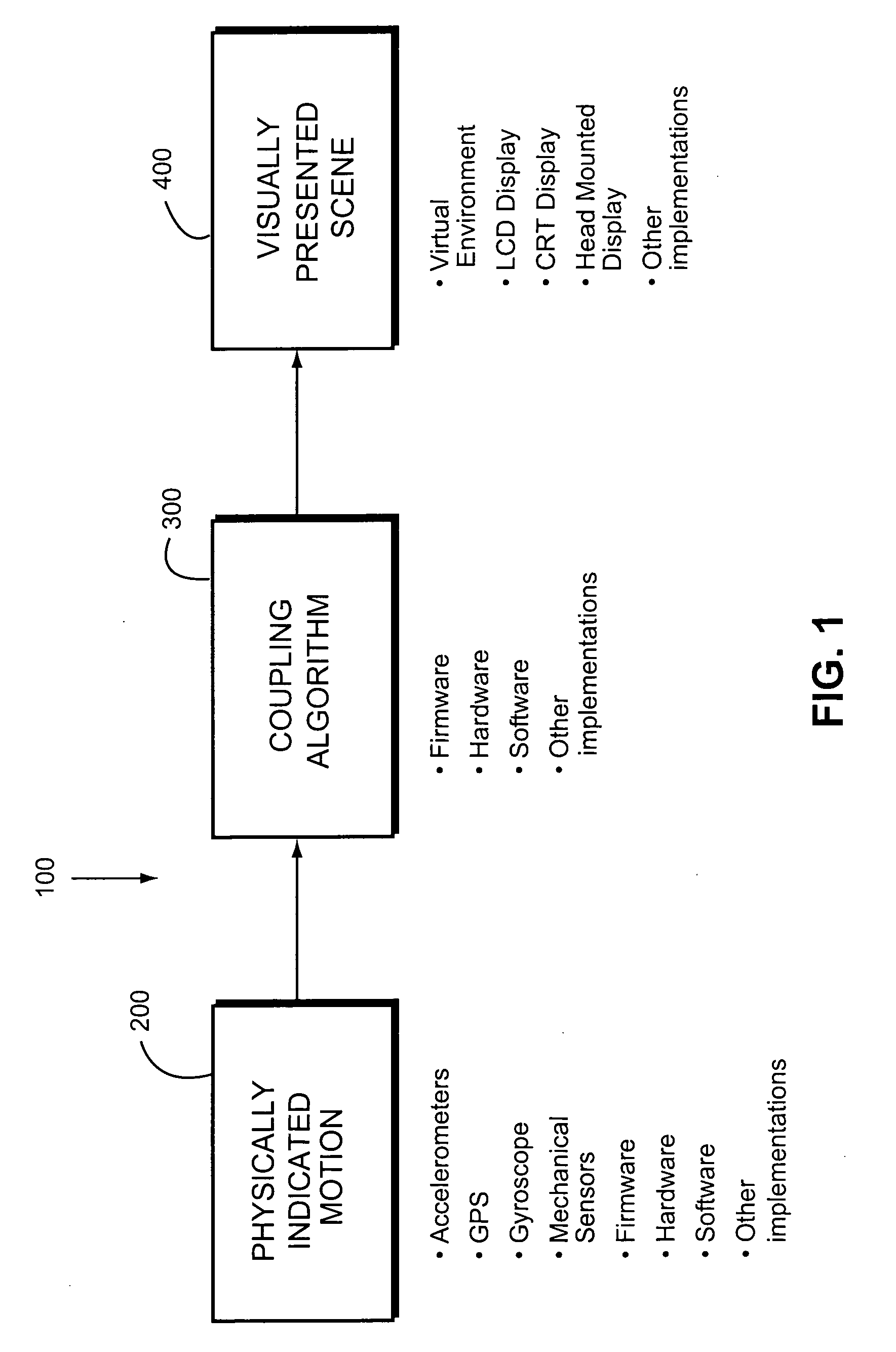Motion-Coupled Visual Environment for Prevention or Reduction of Motion Sickness and Simulator/Virtual Environment Sickness
a visual environment and motion-coupled technology, applied in the field of prevention or reduction of motion sickness, can solve the problems of inconvenience and discomfort, more serious problems, countless trips and vacations have been spoiled, etc., to prevent, reduce and treat motion sickness, and alleviate the discord of spatial information. , the effect of preventing, reducing or at least delaying the onset of motion sickness
- Summary
- Abstract
- Description
- Claims
- Application Information
AI Technical Summary
Benefits of technology
Problems solved by technology
Method used
Image
Examples
Embodiment Construction
[0065]FIG. 1 shows an example non-limiting illustrative implementation of a system 100 providing a motion-coupled visual environment. In the FIG. 1 example shown, system 100 includes three main components: [0066] a sensing arrangement 200 that detects the physically indicated motion, [0067] a coupling arrangement and associated algorithm 300 that couples the physically indicated motion, and [0068] a presenting arrangement 400 that presents an evocative scene.
[0069] In the example implementation, the sensing arrangement 200 includes one or more sensors that sense inertial motion. In one example implementation, sensing arrangement 200 is disposed somewhere on the same platform carrying the person (e.g., mounted to a vehicle frame, vehicle floor, transport platform etc.). Sensing arrangement 200 can sense motion using any of a variety of different sensor types or combinations thereof, including for example: [0070] accelerometer(s) [0071] Global Positioning System (GPS) [0072] Gyroscop...
PUM
 Login to View More
Login to View More Abstract
Description
Claims
Application Information
 Login to View More
Login to View More - R&D
- Intellectual Property
- Life Sciences
- Materials
- Tech Scout
- Unparalleled Data Quality
- Higher Quality Content
- 60% Fewer Hallucinations
Browse by: Latest US Patents, China's latest patents, Technical Efficacy Thesaurus, Application Domain, Technology Topic, Popular Technical Reports.
© 2025 PatSnap. All rights reserved.Legal|Privacy policy|Modern Slavery Act Transparency Statement|Sitemap|About US| Contact US: help@patsnap.com



